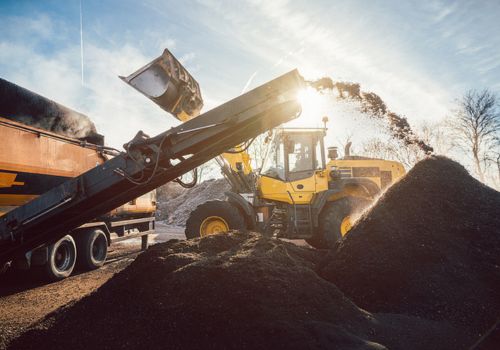The more data a construction company can track, the more insight it will have into its productivity and the more control it will have over its projects.
Technology advances are enabling more and more data to be collected from the equipment. This includes the number of machines a company has onsite, where they are located, and the information collected from the sensors on the machines for machine control, among others.
Data collection through equipment systems continues to improve. In addition to maintenance and repairs, technology is also capturing how the machine is used. At the end of the day, the fact that all this data exists is just the first step. It also needs to be harnessed in a way that makes sense for both operators and the construction company as a whole.
Leveraging Construction Equipment Data
Having systems in place at the jobsite is only the beginning of being connected and getting that construction equipment data. A company must know what data to pay attention to.
Fred Sixt, director, business development, construction, Telogis says, “Construction companies should track hours and location. These data sets provide valuable insight into how assets are being utilized and maintained. It also helps with job costing.”
Telematics is one method to gather and analyze equipment data, and the broad range of capabilities helps the contractor.
“Telematics has the ability to successfully manage equipment data in a way that helps businesses successfully gather and analyze important information that helps with efficiency, productivity, even their bottom-line,” explains Sixt.
Collecting data is only the first step. Knowing how to best leverage the data provided can be extremely helpful for the project.
Magnus Thibblin, segment manager of NAFTA Machine Control, Leica Geosystems, says, “On the data management side, the technology exists to track and control operations such as excavation/digging, dozing, grading, loading, and paving with extreme precision at high speeds. Software enables always-on connectivity between the office and the field so that design changes can be implemented in the field and verified for quality assurance in real-time. All of this connectivity and tracking provides more intelligence, which leads to better decisions and better outcomes.”
The Big Benefits of Data
Using telematics increases the transparency of the job. For instance, construction machine control and survey data collected from sensors on equipment, along with cloud-based collaboration tools, can enable companies to efficiently manage construction projects, according to Thibblin. This includes third-party platforms and sharing job-related data with all stakeholders.
The use of the technology on the equipment—and perhaps, even more important, the data derived from it—can help solve a few problems on the jobsite.
Sixt explains, “Equipment data can help cut fuel and maintenance costs. Equipment data can also provide valuable insight that help companies effectively bid on jobs. In addition, it allows for the proper allocation of equipment on jobs.”
Data provides an immeasurable amount of advantages to the contractor. Having accurate and timely construction machine control and survey data eliminates guesswork and substantially reduces risk, according to Thibblin.
“It also provides increased transparency into the construction process and increases worker safety. All of these benefits can help construction companies be more competitive and more profitable,” Thibblin states.
Having this technology on the equipment essentially enables it to “talk” back to the operator. “Talking” equipment can help reduce costs, while increasing productivity and workflow.
There are a lot of potential benefits in having machines that can communicate with the operator. Sixt says, “’Talking machines’ have the potential to reduce cost, maximize uptime, and increase production. They may also create a more engaging interaction between the operator and the equipment. Imagine the possibility of having two-way interactions between the operator and the equipment, enabling the operator to sync with the machine and accomplish more in less time with less risk and fatigue.”
The Intelligent Jobsite of the Future
The future of the construction jobsite will be more “intelligent,” which is based on immediate access to accurate data throughout the jobsite.
What will this look like? Thibblin suggests, “This data is collected by any number of sensors, including GPS, total stations, laser scanning, mobile mapping, and even unmanned aircraft systems, and it is managed through an intelligent cloud-based system that creates a collaborative, real-time environment.”
Machine control through data collection on the equipment makes it possible to finish projects faster with lower costs and higher accuracy. It’s an investment that helps contractors save time and money while meeting specifications. The benefits are real and the ability to control the variables and eliminate guesswork will have a substantial impact on the construction industry. These results will accelerate the adoption of intelligent construction solutions in the future.
“As more machines are connected on the jobsite, the better efficiency, accuracy, and productivity can be measured. And having all of these measurements gives contractors and owners more intelligence to make better decisions earlier in the process,” Thibblin concludes.












